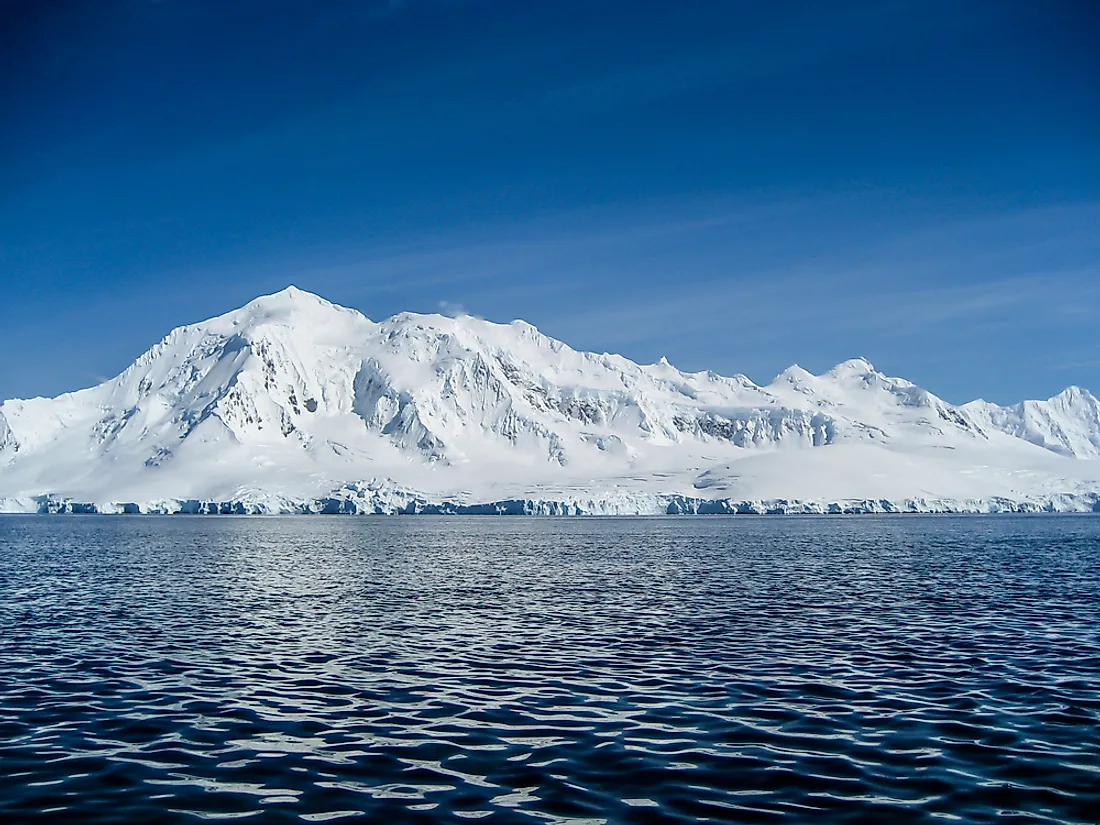How Cold Is the Water in the Antarctic?

Continental Antarctica is the coldest place on earth, with temperatures in some parts being lower than those experienced on Mars. Surface temperatures average at -10 °C but can plunge to -68 °C further inland. With temperatures perpetually at below zero, the snow and ice in Antarctica are on a constant freeze throughout the year, regardless of the season. The coastal region of the continent is warmer, with temperatures ranging between -20 °C and -30 °C. Due to the freezing temperatures, Antarctica is the remotest place on the planet, with virtually no permanent human settlement. The only habitation on the continent is restricted to small research stations, which have a combined population of about 50,000.
Ice sheets, Icebergs, and Glaciers
A permanent ice sheet and glaciers of immense size carpet most the landscape in continental Antarctica, and contain more than three-quarters of the world’s fresh water. The ice sheet flows towards the sea where warmer temperatures cause it to crumble into icebergs. These icebergs that float over the surrounding ocean vary in size, with some being bigger than islands. Iceberg B-15 is unusually large, bigger than the entire island of Jamaica. Waters around these icebergs is usually colder than the surrounding waters.
The Southern Ocean
Surrounding Antarctica is a vast ocean known as the Southern Ocean. Unlike the other world’s oceans, the Southern Ocean is not confined by any land border, save that of Antarctica. The Southern Ocean, which was previously thought to constitute the southern portion of the Atlantic, Indian and Pacific Oceans, is the youngest of all the world’s oceans as it was formed 30 million year after Antarctica moved away from South America. The ocean is 23,740 feet at its deepest, but its depth averages between 13,000 and 15,000 feet. The Southern Ocean is significantly warmer than the continent, with water temperatures ranging between -2 °C and 10 °C. During winter, most of the Southern Ocean freezes solid, all the way up to the 65-degree South latitude. Temperatures around the ocean are influenced by winds and currents that encircle the ocean. Some of these winds and currents include the Polar Front, the Antarctic Convergence, and the Antarctic Circumpolar Current.
Ocean Temperatures
The ocean is characterized by upwelling caused by westerly winds blowing around the continent. The upwelling brings up waters from the ocean’s depths which is usually cold. Waters in the Southern Ocean are different from those in the oceans bordering it and are uniform throughout the confines of the ocean’s boundary. The northernmost border of the ocean is marked by the extent of the 13,000-mile long Antarctic Circumpolar Current. As the currents collide against the Antarctic Continental Shelf, it forms two gyres; the Weddell Gyre and the Ross Gyre. The waters in these gyres are cold as they are drawn from the depths of the ocean. Also encircling the continent is the Antarctic Convergence, where the warm subantarctic waters merge with the cold waters of the Antarctic, resulting in vast amounts of nutrients and consequentially of phytoplankton.











